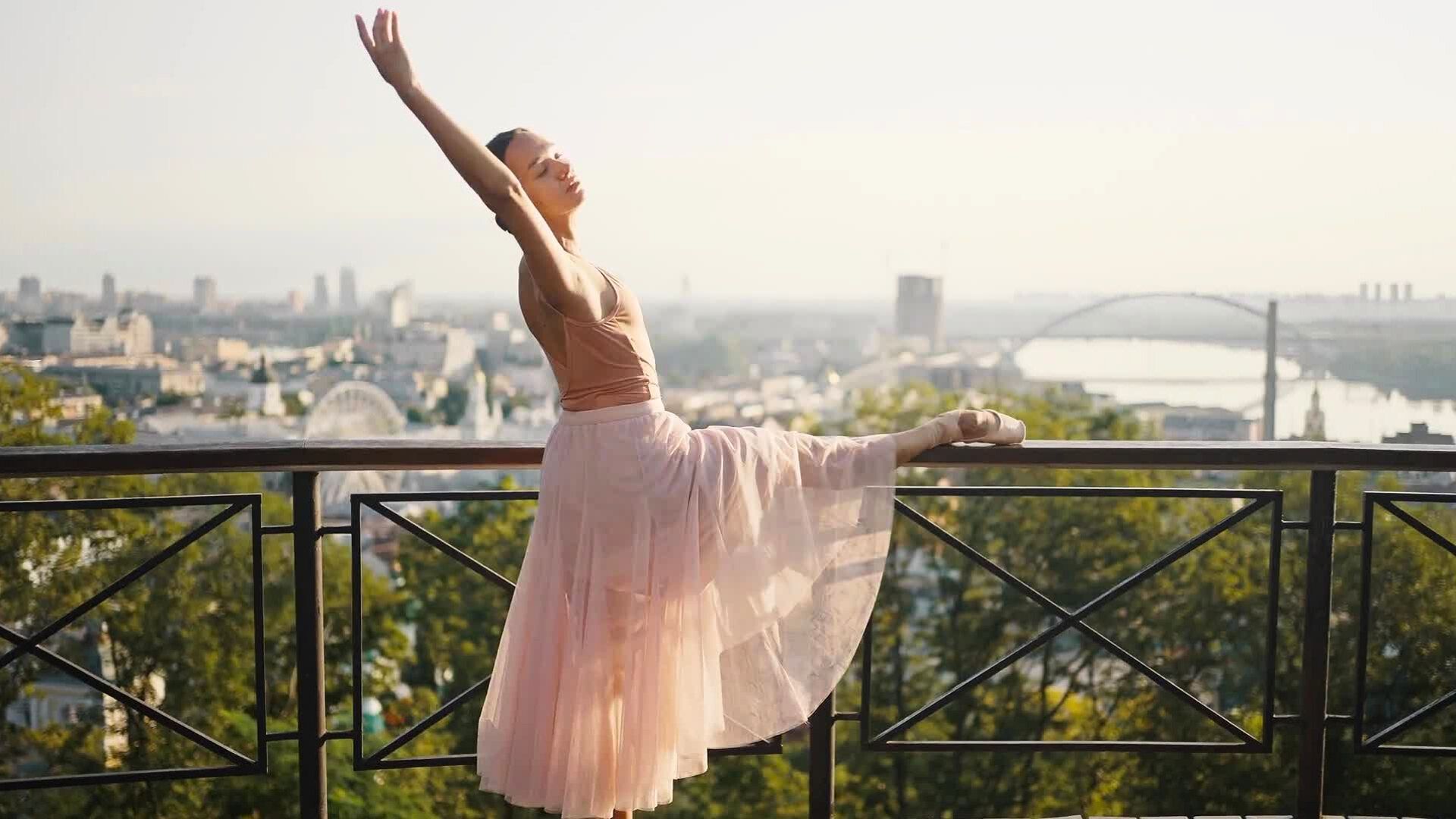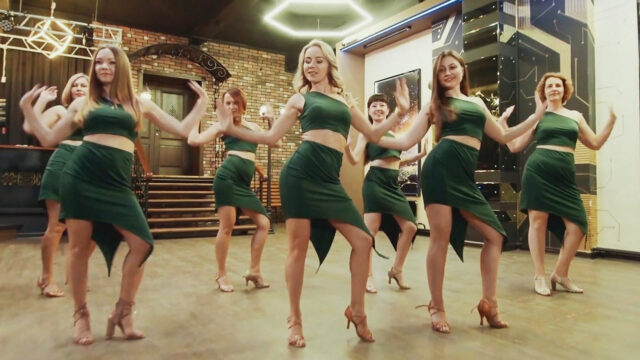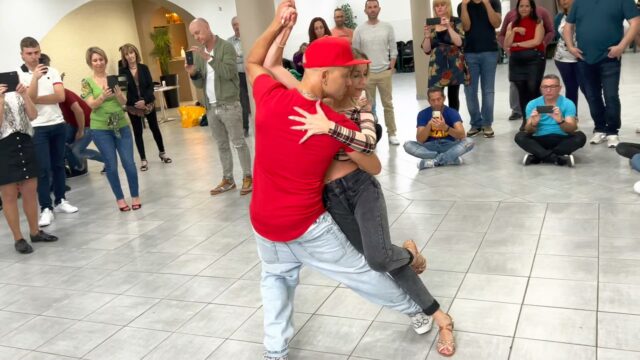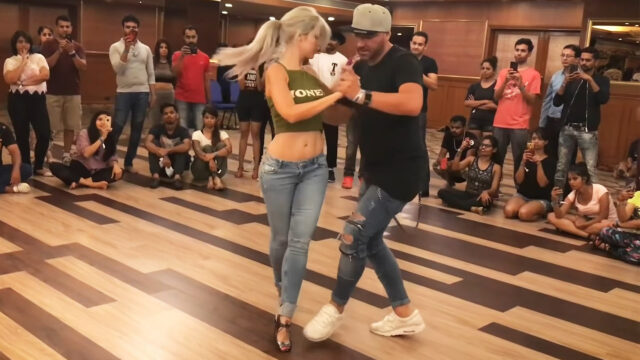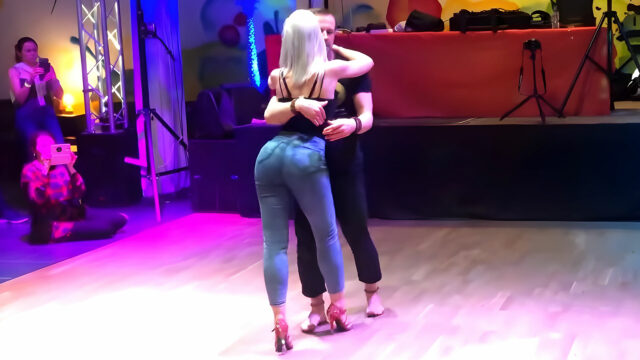Have you ever dreamt of dazzling on the dance floor, moving effortlessly to every beat, and leaving a lasting impression on those around you? It’s time to turn that dream into reality! In this blog post, we’ll explore expert approaches for improving your dancing skills at mental, emotional, physical, creative and social levels. With determination and these practical tips, becoming the best dancer you can be is within your reach. Read on to unlock your full potential as a dancer and finally conquer the dance floor!
Table of Contents
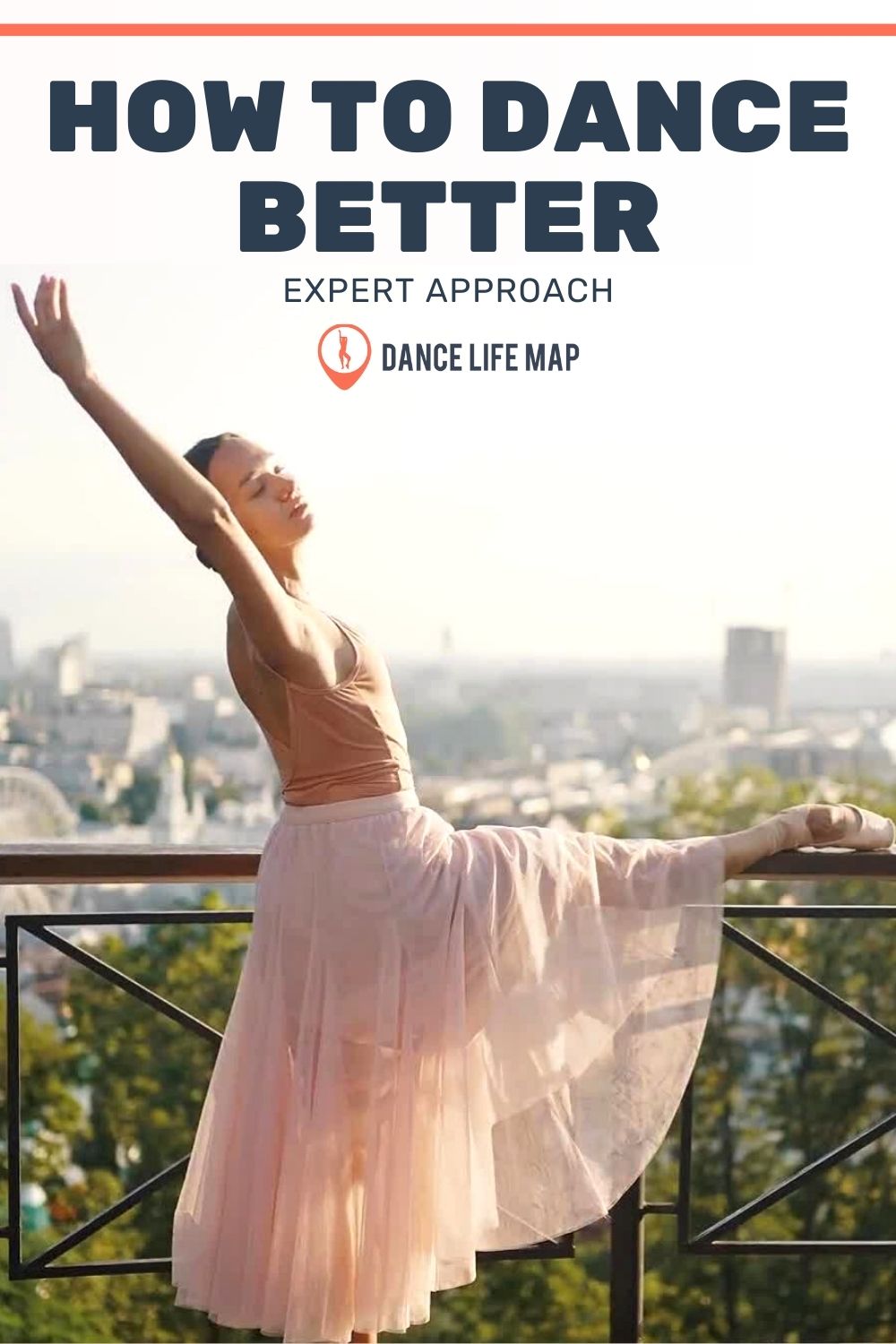
Mental Aspects
Have you every asked yourself what does it actually mean to be a great dancer? What does it mean to dance properly? Is it about moving your legs the right way, is it about the arm movements, facial expressions, musicality or something else? It could be about dedicating all your free time to learning new moves in the dance studio. Or it could be about listening your dance teacher and following his/her instructions all the time. Is there a real difference between professional dancers and non dancers?
It doesn’t really matter what your answers are because first step would be get rid of all those concepts and ideas. You will need to clear out all limiting beliefs about yourself and dancing to find your intrinsic motivation for becoming a great dancer, then lean only on your strong points, set goals and take baby steps, improve your confidence, and celebrate every progress you make.
Find Your Intrinsic Motivation For Becoming A Better Dancer
Discovering your intrinsic motivation is the most important step towards becoming a good dancer. Intrinsic motivation refers to the deep-rooted desire that drives you to improve in dance, not for external rewards or recognition, not for the reason to please your parents or partner, but because it genuinely fulfills, excites you and makes you glow from within. Research has shown that those who are intrinsically motivated are more likely to persevere through challenges, display mental toughness, and experience greater overall well-being.
To identify your intrinsic motivation, start by reflecting on what initially sparked your passion for dance: perhaps it was watching a mesmerizing performance or realizing how dancing made you feel alive and connected with yourself. Ask yourself and write down the reasons why improving as a dancer matters to you personally – maybe it’s about expressing yourself creatively or overcoming physical limitations.
Recognize this inner drive as the fuel that will keep you engaged and committed during your quest for improvement. By nourishing this internal fire and focusing on the meaningful aspects of your growth as a dancer rather than comparing yourself to others or seeking validation externally, you’ll be more likely to enjoy each step of your journey towards becoming the best possible version of yourself on the dance floor.
Clear Out Your Limiting Beliefs About Yourself And Dancing
One major obstacle to becoming a great dancer is the presence of limiting beliefs about oneself and dancing. These could be negative thoughts, such as believing you’re too old or uncoordinated to learn new dance moves, or that you’ll never master a particular style. It’s crucial to confront these beliefs head-on and replace them with positive affirmations in order to build confidence and see true progress.
For example, instead of saying “I’ll never be a good dancer because I’m not athletic enough,” try adopting an empowering mindset like “With consistent practice and determination, I can improve my skills on the crowded dance floor.” Reframing your thoughts in this way helps create mental space for growth and learning, allowing you to fully engage with dance classes or lessons without being held back by self-doubt.
Surround yourself with motivating influences – watch videos of inspiring dancers from various backgrounds who overcame obstacles and achieved success on their own terms. By consistently working on clearing out these limiting beliefs, you will pave the way for personal growth in how to dance better while enjoying every moment spent refining your craft.
Lean Only On Your Strong Points
Focusing on your strengths is essential when learning how to dance better. We all have unique skills and abilities that can help us excel in different aspects of dancing, whether it’s rhythm, flexibility, or balance. Instead of dwelling on what you might struggle with, lean into those areas where you naturally shine.
For example, if you are great at remembering choreography but have difficulty executing certain moves smoothly, concentrate on perfecting the routines first. As you continue to improve your knowledge of dance sequences and gain confidence in your memorization skills, gradually start incorporating more challenging movements. By building upon your strong points and practicing consistently, not only will you witness steady progress in your overall artistic ability but also develop a greater appreciation for the various aspects involved in becoming a better dancer.
Another vital aspect of leaning on your strong points involves cultivating self-awareness about which dance styles suit you best. Pay attention to what energizes and excites you while attending hip-hop classes versus ballet or jazz dance lessons – this could be an indication of where your innate talents lie. Pursuing the genres that resonate with you the most will likely result in enhanced motivation and enjoyment throughout the learning process. It could also foster a deeper connection with both yourself and others sharing similar passions.
Improve Your Confidence
Building confidence is a crucial aspect of becoming a better dancer. A lack of confidence can hold you back from performing at your best, so it’s important to focus on building up your self-esteem. One way to do this is by connecting to your intrinsic motivation for dancing and reminding yourself why you love it.
Keep a SUCCESS DIARY and write down on a daily basis what you appreciate about yourself as a dancer and as a person, as well as what made you grateful today. Write down everything that comes to your mind, even if it seems minor and insignificant. Learn to validate everything that you do and to love yourself unconditionally. Train your mind to be grateful and to celebrate every bit of progress and success along the way.
Finally, stop comparing yourself with others, embrace your uniqueness, and fully engage with it. Explore yourself and have fun along the way. These tips will guide you along the only pathway loaded with a lot of energy that will fuel your victory.
Set Goals And Take Baby Steps
Setting goals and taking small, achievable steps is key to improving your dance skills. It’s important to have a clear idea of what you want to achieve and break it down into manageable tasks. For example, if you want to master a specific dance move, set a goal for yourself by breaking down the steps involved in that move and practicing each component until you reach your desired level of proficiency. Celebrate every progress along the way as it will keep you motivated.
It’s essential to be realistic about your expectations and not try to rush the process. Dancing takes time, dedication, and patience – so don’t get discouraged if things don’t come easily at first. Remember that improvement comes with practice! The more consistent you are, the faster you will see results!
Also focus on setting SMART goals (specific, measurable, attainable, relevant and time-bound) because these types of goals are easier for us as humans to track and recognize our progress towards achieving them. This gives us the motivation to aim higher and strive for greater targets!
Celebrate Every Progress
Improving your dancing skills can be a challenging journey. One way to stay motivated and focused is by celebrating every progress you make. No matter how small the achievement, it’s important to recognize that each step brings you closer to achieving your goals. For instance, if you struggled with a particular move during class but nailed it in practice, take pride in that accomplishment and use it as motivation for future growth.
Recognizing your progress also helps build self-confidence and reduces negative thinking patterns associated with limiting beliefs about yourself or dancing ability. Celebrating every success creates positive associations with dance and motivates further improvement on all levels – physical, mental and emotional.
In summary, every tiny advancement counts! Whether perfecting dance technique or choreography routines, celebrate reaching milestones along the way will encourage hard-working dancers who are dedicated to always improving their skills!
Emotional Aspects
Learn to let go of expectations and focus solely on the journey itself. Embrace your authenticity and connect with your senses, feelings, and emotions to become a better dancer!
Leave Aside Every Expectation
It’s important to leave aside every expectation when trying to improve your dancing skills. Expectations can make you feel overwhelmed and frustrated, which can hinder your progress by making you stressed out. Instead, focus on enjoying the process and being present in the moment.
Don’t put pressure on yourself to reach a certain level within a specific timeframe. Give yourself permission to make mistakes as they are an inevitable part of learning any new skill, including dancing. By leaving aside every expectation, you can enjoy the journey of becoming a better dancer without unnecessary stress and anxiety while having fun!
Learn To Focus Only On The Journey Itself
Focusing only on the journey itself is an important part of improving your dance skills. Instead of worrying about making mistakes or comparing yourself to others, shift your focus to enjoying the process and learning at your own pace. This mindset can help lessen performance anxiety and improve overall confidence in your abilities.
By embracing the present moment and immersing yourself fully in each practice session or class, you are better able to connect with the music and express yourself through movement. Ultimately, focusing solely on the journey will allow you to develop a deeper appreciation for dance as an art form and enrich your overall experience as a dancer.
Embrace Your Authenticity
Embracing your authenticity is essential for becoming a better dancer. Your uniqueness sets you apart from other dancers and allows you to create something special with your moves. Don’t try to imitate someone else’s dance style; instead, tap into your inner core and let your own style shine through in every step. Your authentic expression will give depth and meaning to each movement, making it more engaging for the audience.
Connecting with your emotions is another way of embracing authenticity while dancing. As you move on the floor, express yourself without fear or hesitation. Let your life experience and your stories to speak through your body. Dance to feel alive, not just to impress others or win competitions. Most dancers neglect it, but by doing so, you’ll find greater fulfillment in dance than if you were simply trying to fit into a preconceived mold.
Connect With Your Senses, Feelings And Emotions
To become a better dancer, it’s important to connect with your senses, feelings and emotions. Dancing is not just about moving your body in time with the music, but also expressing yourself through movement. In order to do this effectively, you need to be able to tap into your innermost emotions and feelings.
For example, when dancing ballet, you can improve by focusing on how the music makes you feel emotionally. This will help you channel those emotions into your movements and create an authentic performance that truly captures the essence of the dance. Similarly, when practicing hip hop or jazz dance moves, focus on connecting with the beat of the music and allowing it to guide your movements.
Connecting with your senses is also crucial when learning new dance styles or techniques. For instance, paying attention to how certain arm or knee movements make you feel physically can help improve muscle memory and coordination over time. By regularly tuning into both physical sensations and emotional responses during practice sessions, dancers can develop a deep connection between their minds and bodies – ultimately becoming more confident performers who are fully immersed in their craft.
Physical Aspects
Practice consistently and incorporate diverse dance styles into your routine to improve your skills on the physical level.
Use Breathing Techniques For Relaxation Before Classes
Taking a moment to focus on breathing before dance classes is essential for relaxation and optimal performance. Incorporating deep breathing techniques, such as belly breathing, can help calm nerves and center the mind. By practicing them regularly before dance classes, dancers can cultivate a sense of mindfulness and enhance their overall performance. Remembering to breathe deeply is an important step in becoming a better dancer both physically and mentally.
Warm Up Properly
Proper warm-ups are crucial to keep your muscles and joints flexible and reduce the risk of injuries while dancing. Before starting any dance routine, you should engage in some proper warm-up exercises that will increase body temperature, stimulate blood flow, and enhance free movement. You can do these exercises on your own or incorporate them into dance classes.
A warm-up typically consists of a range of movements that target all parts of the body from head to toe. These movements help activate specific muscles used during dancing, such as leg kicks for hip-hop dancers or plies for ballerinas. It is also essential to include general aerobic exercises like jogging or jumping jacks that will raise your heart rate and breathing before hitting the dance floor fully. With an excellent warm-up routine in place, you can prevent injury or even improve performance as it helps increase flexibility and minimize muscle soreness.
Whether you’re a beginner or an experienced dancer, warming up correctly should always be part of your practice routine to maintain healthy limbs and overall fitness levels. Keep in mind; a good quality dance warm-up is essential for dancers at all levels who want to improve their skills consistently!
Practice Consistently
Practice makes perfect, and this applies to dancing as well. Consistency is key when it comes to improving your dance skills. Whether you’re a beginner or an advanced dancer, practicing consistently can help you master the art of dance. Make sure to set a schedule for practice sessions and stick with it. Try dedicating at least 30 minutes each day to practice drills or routines that challenge you.
If you have trouble finding motivation, consider turning your practice into a fun activity by inviting friends or joining virtual dance classes online. By consistently practicing every day, you’ll start noticing improvements in your muscle memory and overall technique in no time.
Research has shown that consistent dance training can benefit mental health by reducing stress and anxiety levels while increasing self-esteem and overall cognitive function. Additionally, studies have found that children who receive consistent exposure to music and movement tend to perform better academically than those who do not receive such exposure. So don’t underestimate the power of consistency in improving your dancing skills!
Focus On Technique And Form
Improving your technique and form is essential to become a better dancer. It’s the foundation for every dance style, from ballet to hip hop. Start by breaking down each movement into smaller pieces, focusing on perfecting one aspect at a time. Pay attention to how each part of your body moves, from head to toe, and ensure that they all work together in harmony.
Keep in mind that proper posture plays a major role in achieving good technique and form. Maintain a straight back with shoulders relaxed and keep your gaze forward during movements. Don’t forget about foot placement as well – pointed toes for ballet or stomping for hip hop can make all the difference! Practice these techniques regularly until they eventually turn into muscle memory, allowing you to focus more on expressing emotion through dance rather than worrying about technicalities.
With consistent practice and dedication towards improving technique and form, you’ll see significant progress within weeks or months of starting out. Remember that dancing is not just about perfect execution but also self-expression – so don’t forget to enjoy yourself along the way!
Creative Aspects
Unleash your inner creativity and learn how to tap into your unique dance style with our expert tips – keep reading!
Tap Into Your Core And Your Unique Dance Style
When it comes to dancing, one of the keys to improvement is embracing your own unique style. Many dancers fall into the trap of trying to copy others or fit a specific mold, but this can limit their potential for growth and creativity on the dance floor. By tapping into your core and embracing your authentic self, you can develop a dance style that is truly your own.
This means paying attention to how you move and what feels natural to you, rather than simply following someone else’s choreography or movements. You can experiment with mixing different genres together or incorporating elements from other styles that resonate with you. This not only helps improve your overall skills as a dancer but also makes it more enjoyable because you’re allowing yourself to express who you are through dance.
Engage Your Mind-Body Connection
Engaging your mind-body connection is a crucial step in improving your dancing skills. It refers to the ability to be present in the moment and aware of your body’s movements while simultaneously directing them with your mind’s intention. This level of awareness enables you to connect with yourself more deeply, express emotions through movement, and communicate with other dancers better.
To engage your mind-body connection, start by paying attention to each part of your body as you move. Focus on how different muscles are contracting or relaxing, the weight distribution on each foot, and how the movement feels overall. Another technique is visualization; imagine yourself performing specific dance moves perfectly before physically executing them.
Studies have shown that engaging our minds and bodies together helps build neural connections within our brains at a faster rate than just thinking or physical exercise alone. So take advantage of this powerful relationship between mind and body during every dance practice session!
Experiment With Mixing Different Genres
As an expert approach to improving your dance skills, consider experimenting with mixing different genres. By combining various styles such as hip hop and ballet or jazz and contemporary, you can create a unique fusion that showcases your individuality as a dancer. Not only will this challenge you to explore new movements and techniques, but it will also help you expand your versatility on the dance floor.
Mixing different genres can also be a great way to express yourself creatively. Try incorporating elements from your favorite dancers or music videos into your routine, or even take inspiration from social situations like watching people dance at parties or events. Don’t be afraid to take risks and step outside of your comfort zone – developing your own style is all about pushing boundaries and exploring new possibilities.
Improve Your Musicality
To become a better dancer, it’s essential to improve your musicality. This means connecting with the music and using it as inspiration for your movements. One way to do this is by practicing freestyling and improvisation, letting the rhythm guide you rather than relying on pre-planned choreography. You can also focus on improving your understanding of different musical genres and styles to expand your repertoire.
A helpful tip is to dance to the music focusing on a single instrument or lyrics at a time. By doing so, you can create multiple masterpieces by concentrating on each instrument and its specific melody.
In addition, incorporating breathing techniques before classes or performances can help you relax and connect more deeply with the music. This will allow you to express yourself through movements that flow seamlessly with the rhythm. Research even suggests that musical training may boost cognitive abilities in dancers by enhancing hippocampal function, so taking the time to develop your musical skills can benefit both your dancing ability and overall brain function.
Practice Freestyling And Improvisation
To improve your creativity, incorporating freestyle and improvisation into your routine can be a game-changer. Freestyling allows you to explore new movements and find your unique style while also improving muscle memory. It’s essential to let go of the fear of making mistakes and focus on having fun with the music.
Improvisation is another technique that can take your dancing to the next level. It involves creating movements spontaneously in response to the music or environment. Improvising helps you gain confidence in expressing yourself through dance.
A helpful tip for practicing freestyle and improvisation is to start by selecting a specific genre or song that resonates with you. As you become more comfortable, switch it up by trying different styles, tempos, or even dancing outside to boost your confidence.
Dancing without any predetermined choreography ignites creativity, freeing up space for inspiration from what surrounds us every day in life; therefore, we suggest practicing this regularly!
Dance Outside Listening To Only Nature Sounds
One unique way to improve your dance skills is by practicing outside and listening only to nature sounds. This can help dancers connect with their surroundings and find inspiration in the beauty of nature. It also allows for a peaceful, distraction-free environment that can help you focus on your movements and technique.
Dancing outside also provides an opportunity to experiment with different styles and improvisation while incorporating the natural elements around you into your performance. Whether it’s swaying to the sound of rustling leaves or adding fluidity to your movements inspired by flowing water, dancing outdoors can offer a refreshing change of pace from traditional dance studio settings. So why not take advantage of your local park or beach for a more immersive dance experience?
Overall, dancing should be enjoyable as well as challenging. Incorporating natural elements into your routine may just provide the perfect balance between improving technique and having fun while doing so!
Practice Dance Meditation
Incorporating dance meditation into your practice can help you connect with your body and inner self on a deeper level. It involves being present in the moment and focusing solely on the intrinsic impulses of your body to the rhythm of music. This practice not only helps improve concentration but also reduces stress and anxiety levels, leading to better overall well-being.
To start practicing dance meditation, find a quiet space where you can move freely without any interruption. Choose calming music that resonates with you and start dancing slowly while focusing on each movement. Try to synchronize your breathing with the movements to enhance relaxation. Don’t be afraid to experiment with different styles or incorporate other elements like nature sounds for added experiences. Focus on the moves that come from a deeper level so to say, as it will also improve connection with your body.
In conclusion, incorporating dance mediation into your routine requires patience, consistency, and an open mind. With regular practice, it can become a powerful tool for improving physical skills as well as mental clarity and overall wellness.
Social Aspects
Connect with other dancers by attending dance parties and events, joining a local dance group or team, and attending workshops to improve your skills. Don’t miss out on the chance to enrich your dancing journey with others who share your passion! Read on for more tips on how to take your dancing skills to the next level.
Try Dancing With A Partner
Dancing with a partner can be an exciting and rewarding experience for anyone looking to improve their skills. It allows dancers to connect on a deeper level and learn from one another, as well as bring out each other’s strengths. When dancing with a partner, it is important to communicate effectively by maintaining eye contact, leading or following confidently, and staying in sync with the music.
One way to practice dancing with a partner is by attending social dances or events where there are opportunities to dance with different people. Step out of your comfort zone and go to a Kizomba, Bachata or Salsa party in your city, this can become your new obsession full of fun, amusement and plenty of socialization. Private lessons can also be beneficial for those looking to focus on specific techniques or choreography.
Overall, dancing with a partner adds an extra layer of fun and challenge. So grab a friend or seek out someone new at your next dance class or event – you never know what you might learn!
Connect With Other Dancers
Connecting with other dancers is one of the most significant ways to become better at dancing. Through interaction and collaboration, you can learn new techniques, styles or even develop a unique dance form. You can exchange ideas about songs, choreography or connect through dance parties, workshops and masterclasses, which are great places to meet like-minded individuals who share your passion for dancing. It doesn’t matter if you’re an introvert or extrovert; connecting with fellow dance lovers could be as simple as reaching out on social media platforms such as Instagram or joining local dance groups.
In addition to expanding your network in the dance community, connecting with other dancers also helps improve social skills and builds confidence. Engagement in group settings provides opportunities to interact positively while expressing yourself through movement without fear of being judged.
Studies have shown that engagement in dance creates emotional competence and improves overall well-being by boosting mood levels due to its stress-relieving nature. By attending events where people come together solely driven by their love for this art form such as a local dance competition, exhibition or festival – you can establish long-lasting connections that will only enhance your journey towards becoming a skillful dancer.
Attend Dance Parties And Events
Attending dance parties and events can be an exciting way to improve your social dancing skills. It’s a great opportunity to apply the techniques you’ve learned in class and try out new moves on a crowded dance floor. Dancing with different partners also helps you adjust to their styles, working as a challenge for your adaptability and flexibility.
Social dances like salsa, bachata or kizomba, are usually non-competitive which makes it an enjoyable experience, unlike dance competitions where there is more pressure on performing better than others which could sometimes lead to discouragement among some people.
Attend Workshops And Masterclasses
Attending workshops and masterclasses can significantly improve your dance skills. These sessions offer a wide range of benefits, including expert instruction, access to new styles and techniques, and exposure to different forms of art. By attending these events, you can learn from experienced and famous dancers who can provide valuable feedback on your technique or choreography.
For instance, if you are interested in contemporary dance, you could attend a workshop with a professional contemporary dancer or choreographer. This would allow you to learn the latest moves in this style while also getting feedback on how well you perform them. Similarly, if social dancing is more your thing, attending salsa or tango classes will help improve not only your dancing but also your social skills.
Moreover, by participating in workshops and masterclasses regularly over time can help build muscle memory faster than practicing alone. It’s remarkable how much progress one can make when exposed to regular training under skilled mentors’ watchful eyes! So whether it’s learning new dance steps or simply improving at an established form of dance – workshops and masterclasses are undoubtedly worth exploring!
Join A Local Dance Group Or Team
Joining a local dance group or team can be one of the most effective ways to improve your dancing skills. Not only will you receive regular training and practice with like-minded people, but you’ll also have opportunities to perform in front of others, get feedback from skilled dancers, and build lasting relationships within the dance community. Whether it’s hip hop, ballet, jazz, or any other style you’re interested in, there are likely multiple groups or teams available in your area that cater to different levels of experience.
Joining a local dance team can also provide a social outlet for those who may not have many friends with similar interests. Dance provides an excellent opportunity for individuals to connect with others and build meaningful relationships through shared experiences.
In addition to improving physical fitness and coordination as well as developing creativity and self-expression skills, joining a dance group allows individuals to develop important social skills such as teamwork, communication, leadership and collaboration among others that are essential across all aspects of life . So don’t hesitate – look up some local dance team near you today!
Bonus Tip: Record Yourself on Camera
When all of the above-mentioned steps are cleared, recording yourself on camera or your cell phone while dancing is an excellent way to improve your skills and become a better dancer. Here are some benefits of recording yours practice sessions or performances:
- Self-Evaluation: Recording yourself will help you to evaluate your own dancing skills. You can watch the video and analyze your technique, form, and timing. You can also identify any mistakes or weaknesses that you may not be aware of while dancing.
- Feedback: You can share the video with other dancers or instructors to receive feedback on your performance. They can point out any areas that need improvement and offer tips and suggestions to help you improve.
- Visualization: Watching yourself dance on video can help you visualize your movements and improve your muscle memory. This will allow you to better understand how your body moves and to make adjustments as necessary.
- Motivation: Seeing your progress over time can be a great motivator to continue practicing and improving your skills. It can also help you stay focused on your goals and track your progress.
- Performance: Recording yourself can also help you prepare for performances. You can watch the video to ensure that your performance is polished and ready for the stage.
Overall, recording yourself on camera or a smartphone is a simple yet powerful tool for improving your dancing skills. By using this technique regularly, you can accelerate your progress and achieve your goals as a dancer.
Conclusion
In summary, becoming a better dancer requires commitment, dedication and passion. It’s not just about learning dance moves or perfecting choreography – it’s also about embracing your authenticity, setting goals and celebrating each step of the journey.
Whether you’re training alone or with others, remember to focus on technique and form while also tapping into your creativity and experimenting with new styles. And most importantly, have fun! With consistent practice, patience and perseverance, you can achieve any dance goal you set for yourself. So get out there on that dance floor and let your body move to the beat – the world is waiting to see what kind of amazing dancer you will become!
